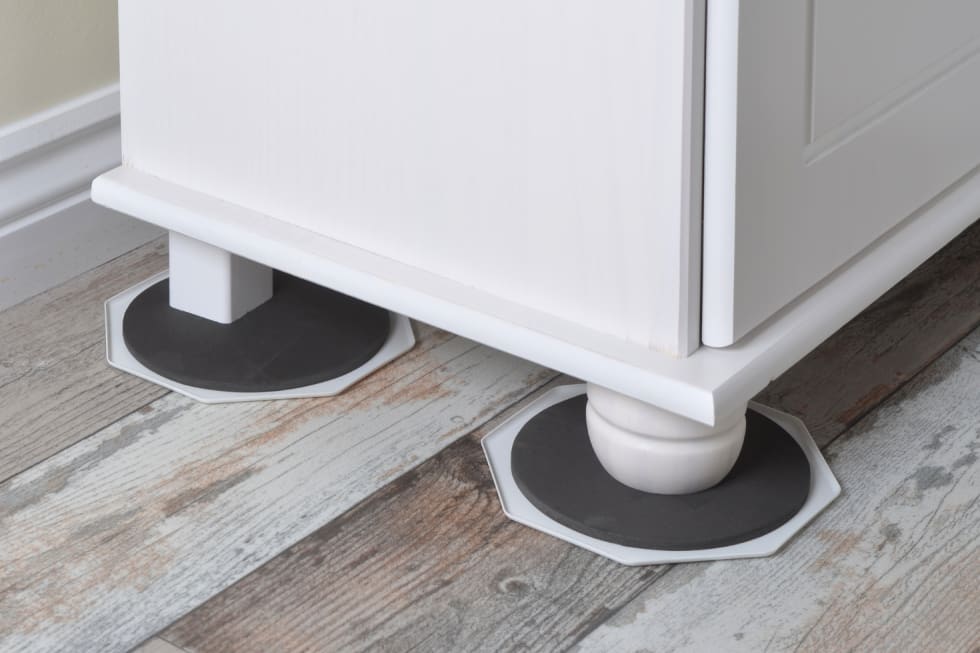10 Expert Tips on How to Move a Fridge Safely - Avoid Common Pitfalls!
Introduction
Moving a fridge can be a daunting process. Beyond navigating the incredible weight and size (many refrigerators can be up to 400 pounds), you have to ensure your refrigerator arrives in perfect working condition. This is why expert advice invaluable.
Leveraging professional tips can transform a potentially stressful move into a smooth, hassle-free experience. For that reason, we’ve compiled this comprehensive guide on how to move a fridge safely, from meticulous pre-move preparation to navigating stairs and everything in between.
Pre-Move Preparation
Before you even think about maneuvering your fridge through the door, there’s a bit of prep work that’s crucial to ensuring the move goes smoothly. First off, you’ll want to defrost the unit. This might take a bit of time, so plan accordingly. After defrosting, give it a good clean—trust me, you don’t want to discover old spills and smells in your new space.
Next, disconnect your fridge. If you’re scratching your head wondering how, just unplug it, and if it has an ice maker or water dispenser, you’ll need to disconnect the water line too.
Now, here’s a step many overlook: secure all loose parts. This means taping down shelves, drawers, and any other movable parts inside the fridge. The last thing you want is a symphony of crashing plastic when you’re navigating corners.
Now, onto measurements—arguably the most critical step. Ensure you measure your fridge’s dimensions and compare them with the doorways and paths you’ll be moving it through. There’s nothing more disheartening than getting stuck at the front door. For this, you’ll need a reliable measuring tape.
Choosing the Right Equipment

When it comes to moving a fridge safely, having the right equipment is non-negotiable. The cornerstone of your moving arsenal should be a reliable appliance dolly. These are designed specifically for heavy, awkward items like refrigerators, ensuring you can maneuver them with greater ease and stability. Look for brands that are known for their durability and ease of use, such as Milwaukee or Harper Trucks. These brands often feature dollies with straps or securing mechanisms, which are invaluable for keeping your appliance steady on its journey.
But what about your floors? Enter furniture sliders. These nifty gadgets allow you to glide your fridge across various types of flooring without leaving a mark. They’re especially useful if you’re navigating through tight spaces where using a dolly might not be feasible.
Securing your fridge properly is the next critical step. Moving straps or bungee cords are essential for ensuring the doors stay closed during transport. They also help to secure the fridge to the dolly, minimizing the risk of sliding or tipping.
Safe Lifting Techniques
Lifting a refrigerator is no small feat, and doing it wrong can lead to serious injury. The key to a successful and injury-free move involves understanding and applying the correct lifting techniques. First and foremost, never attempt to lift a fridge by yourself. Always have at least one other person to help share the load.
When lifting, ensure you and your helper bend at the knees and keep your backs straight, lifting with your legs rather than your back. This technique helps distribute the weight more evenly and prevents strain on your lower back. Additionally, keep the fridge as close to your body as possible during the lift to maintain balance and control.
Using an appliance dolly is essential. The dolly takes on the bulk of the fridge’s weight, allowing you to guide it more than bear its full weight. When positioning the fridge on the dolly, tilt it slightly back to secure it against the dolly’s frame, and use moving straps or bungee cords to fasten it securely. This setup minimizes the risk of the fridge slipping or falling during the move.
For a visual guide on safe lifting techniques, search ‘refrigerator moving techniques’ on YouTube. A visual guide can offer insights and reminders about proper posture and technique that are easy to follow and replicate.
Protecting Your Floors

Furniture sliders or thick blankets can do wonders for protecting your floor. Sliding your fridge across the floor on these smooth, protective layers can prevent unsightly damage to your floors. It’s like giving your fridge a pair of slippers, making the move gentler on both the appliance and your home.
Checking the fridge’s weight before the move is crucial, as it can help you understand the force it may exert on your floors. For a DIY floor protection solution, consider cutting large pieces of cardboard or using plywood sheets to create a solid path for the move. This makeshift roadway not only protects your floors but also makes it easier to roll the fridge to its new location.
Remember, a little preparation goes a long way in keeping your floors pristine during a move.
Transporting the Fridge
When it comes to transporting your fridge, there are a couple of golden rules that can’t be overlooked. First and foremost, always keep the fridge upright. Laying your refrigerator on its side can cause oil from the compressor to flow into cooling tubes, which can lead to cooling issues or even damage once you plug it back in at your new place.
Moving straps are crucial for this reason, as they secure your fridge in the vehicle. They prevent the appliance from shifting or tipping over during transport, which could lead to damage or, worse, a safety hazard. You need strong, reliable straps that can handle the weight and size of a refrigerator, which is why I recommend checking out some heavy-duty moving straps from Amazon or your local hardware store.
Pro Tip: When securing your fridge in the vehicle, use at least two straps—one near the top and another at the bottom. This provides balanced support and minimizes any movement. Additionally, if possible, position your fridge against a wall of the vehicle and use soft padding, like blankets or foam, between the appliance and the vehicle’s walls. This not only adds an extra layer of stability but also protects your fridge from scratches and dents during the journey.
Navigating Stairs
If you’re moving into an apartment or condo with stairs, you’ll have a bit more of a hurdle than others.
First off, if you’re using a dolly, ensure it’s securely strapped to the fridge. This is where those moving straps or bungee cords come into play.
Now, let’s talk technique. The ‘high-low’ method is your best friend when it comes to stairs. This involves having one person at the lower end of the fridge and another at the higher end as you navigate each step. The person at the lower end bears the brunt of the weight, while the person at the top guides the movement and helps balance the fridge. It’s a technique that requires not just strength but also coordination and communication.
Clear, continuous communication between helpers ensures everyone is moving in sync. Before you start, agree on simple, clear commands to avoid any confusion. Phrases like “step down,” “hold,” and “ready” can make a big difference in ensuring a smooth operation.
Rental and Professional Help Options

Deciding between a DIY move and hiring professional movers is a dilemma many of us face. On one hand, the DIY approach can be more affordable, offering a sense of accomplishment and control over the process. However, it requires a significant investment of time and effort, not to mention the risk of injury or damage to your fridge and property.
Hiring a team of experienced movers, on the other hand, can alleviate the stress and physical strain of moving a large appliance like a refrigerator. They come equipped with the right tools, vehicles, and expertise to handle the job efficiently and safely. The cost may be higher than doing it yourself, but when you factor in the potential risks and the value of your time, the investment often proves worthwhile.
To help you make an informed decision, consider using a platform like Unpakt to compare quotes from different moving companies. This tool allows you to enter your moving details and receive estimates from several movers, enabling you to weigh the cost against the benefits of professional assistance accurately. Remember, the cheapest option isn’t always the best—look for companies with good reviews, proper insurance, and a track record of reliability.
Cost Considerations
When it comes to moving your fridge, whether you’re rolling it to the other side of town or across the country, understanding the cost considerations involved is crucial. Several factors play into the overall expense, and being aware of these can help you budget more effectively.
Firstly, the distance of your move is a primary factor. A local move might only set you back the cost of a rental truck and some moving supplies, whereas a long-distance haul could involve professional movers, which significantly increases the cost. The size and model of your refrigerator also matter. Bulky, high-end models might require special handling or extra movers to ensure safe transportation, adding to the cost.
Another factor to consider is the complexity of your moving situation. Are there stairs involved at either location? Will the movers need to navigate tight corners or remove doors to get your fridge out? These scenarios require more time and labor, impacting the final price.
It’s also crucial to get multiple quotes from moving companies or rental services. Prices and services vary, and what one company includes as part of their standard service, another might charge extra for.
Be on the lookout for potential hidden fees as well. Some companies might charge extra for moving items over a certain weight, providing moving supplies, or for moves that require navigating stairs. Ask for a detailed breakdown of costs upfront to avoid any surprises.
Post-Move Tips

Once your fridge has safely arrived at its new home, there’s a temptation to plug it in immediately and fill it up again. However, patience is key here. It’s crucial to let your refrigerator adjust to its new environment before powering it up. This allows the fluids and gases inside the compressor to settle, minimizing potential damage and ensuring optimal performance. Generally, waiting for at least 24 hours is recommended if your fridge was transported upright. If, for some reason, it ended up on its side during the move, extend this waiting period to ensure everything settles properly.
Now, ensuring your refrigerator is level is just as important as the waiting period. An uneven fridge can lead to cooling issues, increased energy consumption, or undue strain on its components. For this, a simple spirit level will be your best friend. Place it on top of your fridge, and adjust the legs or rollers accordingly until you achieve a perfect balance. Not only does this simple step extend the life of your fridge, but it also ensures it operates efficiently.
Additionally, it’s wise to verify the fridge’s operation once it’s back on. Listen for any unusual noises and monitor its cooling performance during the first few hours of operation. If anything seems off, consulting the manual or calling a professional might be necessary to address potential issues early on.
Conclusion
We’ve covered a lot of ground in this guide, from the initial preparations necessary for a smooth move, to the final adjustments required once your fridge is in its new home. The key takeaway? Preparation and safety are paramount. By defrosting, cleaning, and securing your fridge before the move, choosing the right equipment like a reliable appliance dolly and moving straps, and employing proper lifting techniques, you can avoid many common pitfalls. Additionally, protecting your floors, keeping the fridge upright during transport, and allowing it time to adjust to its new environment are all crucial steps to ensure the longevity and functionality of your appliance.
Now that you know how to move a fridge safely, are you ready to find the perfect new spot to place it? Let our AI-powered apartment-finding platform help you discover a rental that checks all your boxes. We take your unique preferences into account to ensure that every feature of your next home, from the kitchen space to the layout, aligns with your needs. Begin your search today and move into a home that’s tailored just for you!




